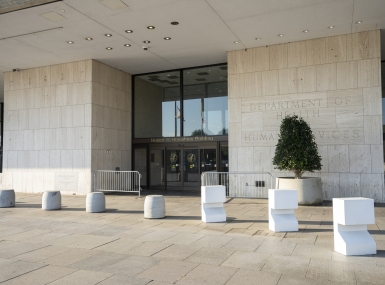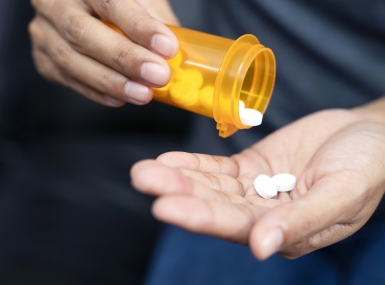Congress and White House pass second COVID-19 legislative package, looks to a third
Author

Blaire Bryant

Mark Ritacco
Upcoming Events
Related News

Key Takeaways
On March 14, by a vote of 363-40, the U.S. House of Representatives approved a second, bipartisan coronavirus aid package, the Families First Coronavirus Response Act (H.R. 6201).
Update: On March 18, the multibillion-dollar emergency aid package bill was passed in the U.S. Senate by a vote of 90-8, following a technical correction (H.Res. 904) made earlier in the week, which provided clarification around the Medicaid FMAP provisions and limited paid sick leave to individuals caring for a child whose school or daycare has been closed due to the coronavirus. The bill was signed into law by the President on the same day.
The package includes five main provisions meant to respond to the deepening economic crisis caused by the coronavirus outbreak.
- Free Coronavirus testing: The Families First Coronavirus Response Act ensures that all individuals, including those with private insurance, Medicare Advantage or Original Medicare, Medicaid, CHIP, VA, FEHBP and TRICARE, as well as the uninsured, will have access to tests at no cost. This broad no-cost access to testing will allow additional services to be covered under the Medicaid program, helping mitigate potential uncompensated, indigent and/or other prevention and mitigation costs for county hospitals and clinics, as well as broader county public health services.
- Food assistance: The U.S. House bill includes more than $1 billion to provide nutritious foods to low-income pregnant women and mothers with young children, help food banks and provide meals to seniors. It also protects students’ access to school meals in the event of school closures. Specifically, the bill contains $500 million to provide access, through the Special Supplemental Nutrition Program for Women Infants and Children (WIC), to nutritious foods to low-income pregnant women or mothers with young children who lose their jobs or are laid off due to the COVID-19 emergency. Additionally, it provides $400 million to assist local food banks to meet increased demand for low-income Americans during the emergency. Of that total, $300 million is for the purchase of nutritious foods and $100 million is to support the storage and distribution of the food.
In many states, county governments (including county public health departments) assist in the local administration and oversight of the WIC program. Counties often contribute significant levels of local funding and support to meet the administrative and supplemental costs of managing the program.
- Medicaid FMAP Rates: The U.S. House bill increases by 6.2 percent the Federal Medical Assistance Percentage (FMAP) that the federal government provides to state and territorial Medicaid programs. This temporary increase will prevent states from cutting Medicaid benefits. It requires states to maintain eligibility standards that are no less restrictive than the date of enactment. It also maintains a special provision that preserves the existing FMAP sharing arrangements between states and their political subdivisions – a major win for counties in certain states.
These new Medicaid provisions will help support states and counties meet increased need for healthcare services provided under Medicaid, as well as free up state and local money for other essential preparedness and response activities. Counties contribute to Medicaid in 26 states, with 18 states mandating that counties contribute to the non-federal share of Medicaid costs and administrative, program, physical health and behavioral health costs. Mandated contributions for local governments are highest in the State of New York, with New York City ($5 billion) and the 57 counties ($2.6 billion) sending approximately $7.6 billion each year to the state for Medicaid costs.
Learn more about the county role in Medicaid across the United States.
- Unemployment Aid: H.R. 6201 gives states the resources and flexibility to provide unemployment benefits to laid off and furloughed workers, as well as to those workers who exhaust their allotted paid leave. It provides $1 billion in 2020 for emergency grants to states for activities related to processing and paying unemployment insurance (UI) benefits, under certain conditions. Of that amount, $500 million – or about half – would be used to provide immediate additional funding to all states for staffing, technology, systems and other administrative costs, so long as they meet basic requirements around ensuring access to earned benefits for eligible workers. The other $500 million would be reserved for emergency grants to states experiencing at least a 10 percent increase in unemployment.
- Paid Sick and Medical Leave: The bill establishes an Emergency Paid Leave Program that replaces a significant share of lost wages so that those who take leave to avoid spreading the virus or due to illness or caregiving responsibilities can pay their bills. The bill requires employers with fewer than 500 employees and government employers to provide employees two weeks of paid sick leave, paid at two-thirds the employee’s regular rate to care for a child whose school has closed, or if childcare provider is unavailable, due to the coronavirus.
Under section 5102 (3) and (4)(B) of the Act, county public health officials may be the ones to decide that an individual might jeopardize public health by continuing to work and thus would be eligible for paid leave. This mandate expires December 31, 2020.
The bill also grants employees of employers with fewer than 500 employees and government employers, who have been on the job for at least 30 days, with the right take up to 12 weeks of job-protected leave under the Family and Medical Leave Act to be used for COVID-19-related medical situations. This also includes leave to care for a child if the child’s school or place of care has been closed, or the child-care provider is unavailable, due to coronavirus.
After the two weeks of paid leave, employees will receive a benefit from their employers that will be no less than two-thirds of the employee’s usual pay.
Specific provisions relating to counties in the Families First Coronavirus Response Act include:
- A provision (Sec. 1702) that requires local governments receiving funds or assistance to ensure their State Emergency Operations Center receives regular and real-time data-reporting on testing and results from state and local public health departments, as determined by the Director of the Centers for Disease Control and Prevention (CDC), and that such data is transmitted to the CDC
The passage of this aid package comes as congressional legislators begin to work on a third aid package, which is expected to be voted on in the Senate by the end of the week.
For more information, please contact Mark Ritacco, NACo’s deputy director of government affairs at mritacco@naco.org.
For more NACo resources on COVID-19, please see the following links:
- COVID-19: County Response Efforts and Priorities (NACo comprehensive resource landing page)
- Federal COVID-19 Response Highlights for Counties (NACo legislative analysis)
- Letter to Congressional Leadership on Coronavirus Pandemic (NACo letter to Capitol Hill)
- Congress, president move quickly on emergency aid to combat coronavirus (NACo blog)

Attachments
Related News

U.S. Department of Health and Human Services announces major restructuring
On March 27, the U.S. Department of Health and Human Services (HHS) announced a sweeping reorganization that will consolidate agencies, shift key programs under a new framework and eliminate thousands of positions. This change brings HHS in line with President Trump's Executive Order, “Implementing the President’s ‘Department of Government Efficiency’ Workforce Optimization Initiative.”

U.S. Department of Health and Human Services moves to reduce public comment in rulemaking
On February 28, the U.S. Department of Health and Human Services (HHS) announced a policy change limiting public comment opportunities to only those required by law. Published in the Federal Register on March 3, the decision rescinds the “Richardson Waiver,” a 1971 directive from then-HHS Secretary Elliot Richardson that encouraged broader public input on regulations related to public benefits, grants and healthcare policies.

U.S. Department of Health and Human Services renews Public Health Emergency Declaration to address national opioid crisis
On March 18, the U.S. Department of Health and Human Services (HHS), under the direction of Secretary Robert F. Kennedy, Jr. renewed the public health emergency (PHE) declaration to address the ongoing opioid crisis, extending critical federal support for coordination, treatment expansion and research efforts. While overdose deaths have declined by 25.5 percent over the past year, synthetic opioids like fentanyl continue to drive fatalities, with approximately 150 Americans dying daily from overdoses.